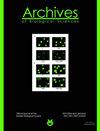伤口感染中日益严重的抗生素耐药性威胁:来自巴基斯坦三级保健的证据
IF 0.8
4区 生物学
Q4 BIOLOGY
引用次数: 1
摘要
本研究对年龄在0 ~ 100岁(平均年龄37.1 ~ 1.9岁)的187例男性和174例女性的361份非重复创面拭子样本进行分析,确定细菌性创面感染的流行情况和分离细菌的药敏模式多样性,以检测是否存在独特/罕见的耐药类型。其中伤口感染193例,占53.46%。大多数感染患者为第二年龄组(21-40岁)。共鉴定出14种细菌,其中最常见的革兰氏阳性菌为金黄色葡萄球菌,革兰氏阴性菌为大肠杆菌。利奈唑胺和万古霉素对分离的革兰氏阳性菌最有效,而革兰氏阴性菌对粘菌素和多粘菌素- b最敏感。根据耐药情况,共检出129种耐药菌株。157株(81.3%)检出多重耐药,162株多重耐药指数(MAR)为0.2。Simpson和Shannon多样性指数表明伤口样品中细菌多样性较高。该研究为伤口细菌感染的流行提供了有价值的见解,并且抗生素耐药性模式可以用于指导有效治疗策略的发展。本文章由计算机程序翻译,如有差异,请以英文原文为准。
The growing threat of antibiotic resistance in wound infections: Evidence from tertiary care in Pakistan
The present study analyzed 361 non-duplicated wound swab samples from 187 males and 174 females, ranging in age from 0 to 100 years with a mean age of 37.1?1.9 years, and to determine the prevalence of bacterial wound infections and the diversity of antibacterial susceptibility patterns of the isolated bacteria to detect the presence of unique/rare resistance types. Of these, 53.46% (193) were found to have wound infections. Most of the infected patients fell in the age group II (21-40 years). A total of 14 bacterial species were identified, with Staphylococcus aureus and Escherichia coli being the most common Gram-positive and Gram-negative bacteria, respectively. Linezolid and vancomycin were the most effective antibiotics against the isolated Gram-positive bacteria, while most Gramnegative bacteria were sensitive against colistin and polymyxin-B. Based on antibiotic resistance, 129 types of resistance were detected. Multi-resistance was detected in 157 (81.3%) bacterial strains, while 162 strains had a multi-antibiotic resistance index (MAR) of 0.2. Simpson and Shannon diversity indices indicated high bacterial diversity in the wound samples. The study provides valuable insight into the prevalence of bacterial infections in wounds and that antibiotic resistance patterns can be useful in guiding the development of effective treatment strategies.
求助全文
通过发布文献求助,成功后即可免费获取论文全文。
去求助
来源期刊
CiteScore
1.40
自引率
0.00%
发文量
25
审稿时长
3-8 weeks
期刊介绍:
The Archives of Biological Sciences is a multidisciplinary journal that covers original research in a wide range of subjects in life science, including biology, ecology, human biology and biomedical research.
The Archives of Biological Sciences features articles in genetics, botany and zoology (including higher and lower terrestrial and aquatic plants and animals, prokaryote biology, algology, mycology, entomology, etc.); biological systematics; evolution; biochemistry, molecular and cell biology, including all aspects of normal cell functioning, from embryonic to differentiated tissues and in different pathological states; physiology, including chronobiology, thermal biology, cryobiology; radiobiology; neurobiology; immunology, including human immunology; human biology, including the biological basis of specific human pathologies and disease management.

 求助内容:
求助内容: 应助结果提醒方式:
应助结果提醒方式:


